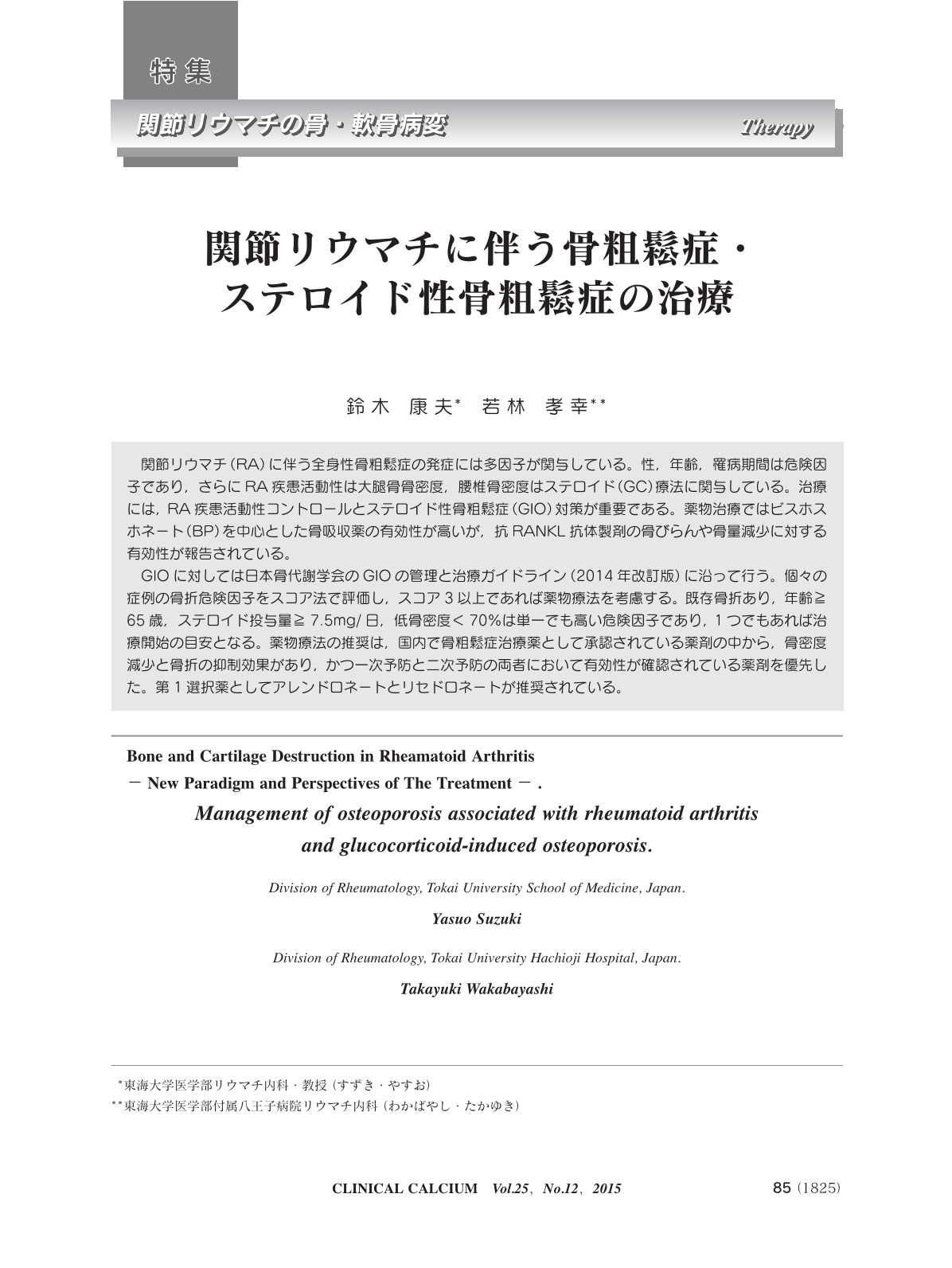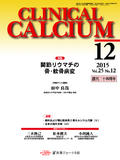Japanese
English
- 有料閲覧
- Abstract 文献概要
- 1ページ目 Look Inside
- 参考文献 Reference
関節リウマチ(RA)に伴う全身性骨粗鬆症の発症には多因子が関与している。性,年齢,罹病期間は危険因子であり,さらにRA疾患活動性は大腿骨骨密度,腰椎骨密度はステロイド(GC)療法に関与している。治療には,RA疾患活動性コントロールとステロイド性骨粗鬆症(GIO)対策が重要である。薬物治療ではビスホスホネート(BP)を中心とした骨吸収薬の有効性が高いが,抗RANKL抗体製剤の骨びらんや骨量減少に対する有効性が報告されている。 GIOに対しては日本骨代謝学会のGIOの管理と治療ガイドライン(2014年改訂版)に沿って行う。個々の症例の骨折危険因子をスコア法で評価し,スコア3以上であれば薬物療法を考慮する。既存骨折あり,年齢≧65歳,ステロイド投与量≧7.5mg/日,低骨密度<70%は単一でも高い危険因子であり,1つでもあれば治療開始の目安となる。薬物療法の推奨は,国内で骨粗鬆症治療薬として承認されている薬剤の中から,骨密度減少と骨折の抑制効果があり,かつ一次予防と二次予防の両者において有効性が確認されている薬剤を優先した。第1選択薬としてアレンドロネートとリセドロネートが推奨されている。
Mechanism of generalized osteoporosis associated with rheumatoid arthritis(RA)is multifactorial and following factors has been proposed:systemic effect of RA synovitis, glucocorticoids, weight loss, and endocrine changes. In addition to control of RA inflammation and management of glucocorticoid-induced osteoporosis(GIO), antiresorptive therapy, such as bisphosphonates is expected to show efficacy. Recently, anti-RANKL monoclonal antibodies have been shown to inhibit bone erosion and bone loss in combination with methotrexate in RA. GC-induced bone loss is most rapid during the initial 3 ~ 6 months and more slowly thereafter. Therefore, both primary and secondary prevention are important. The Japanese Society for Bone and Mineral Research(JSBMR)has updated the Guidelines on the Management and Treatment of GIO and has incorporated a new scoring method. By analyzing five GIO cohorts from primary and secondary prevention studies, age, GC dose, lumbar BMD, and prior fragility fractures were identified as risk factors and the fracture risk for an individual can be calculated as the sum of the scores for each risk factor. Pharmacological intervention should be started on the basis of a score of 3 as the optimal cut-off score. Both alendronate and risedronate are recommended as first-line treatment. Ibandronate,teriparatide, and active vitamin D3 derivatives are recommended as alternative option.



